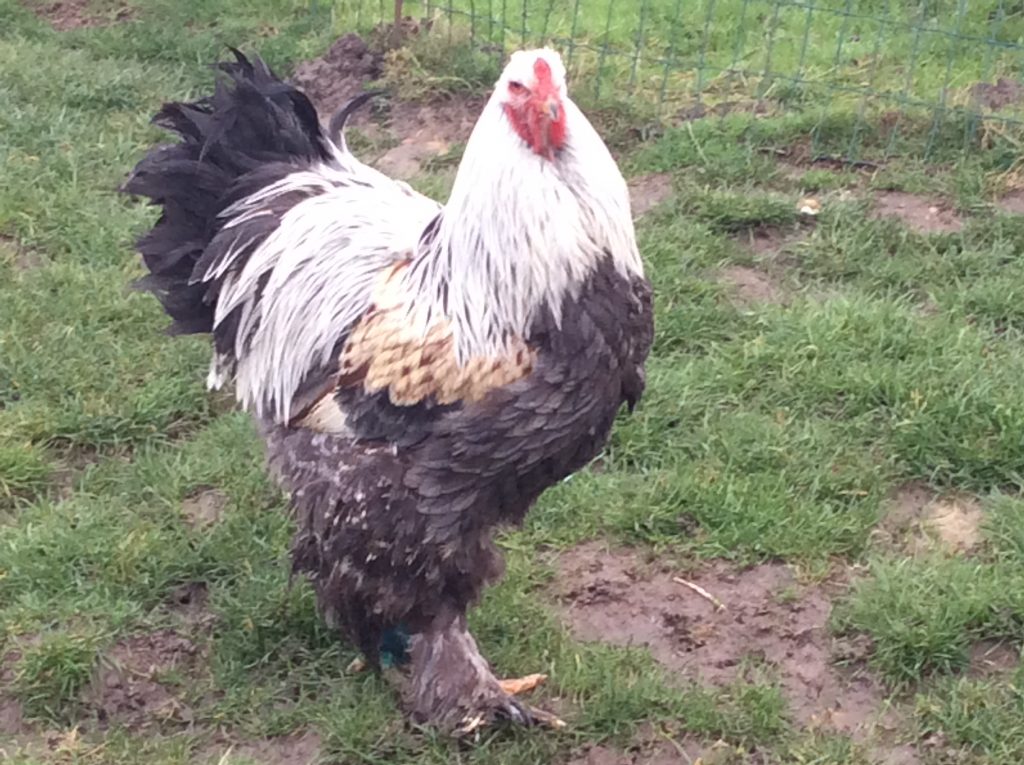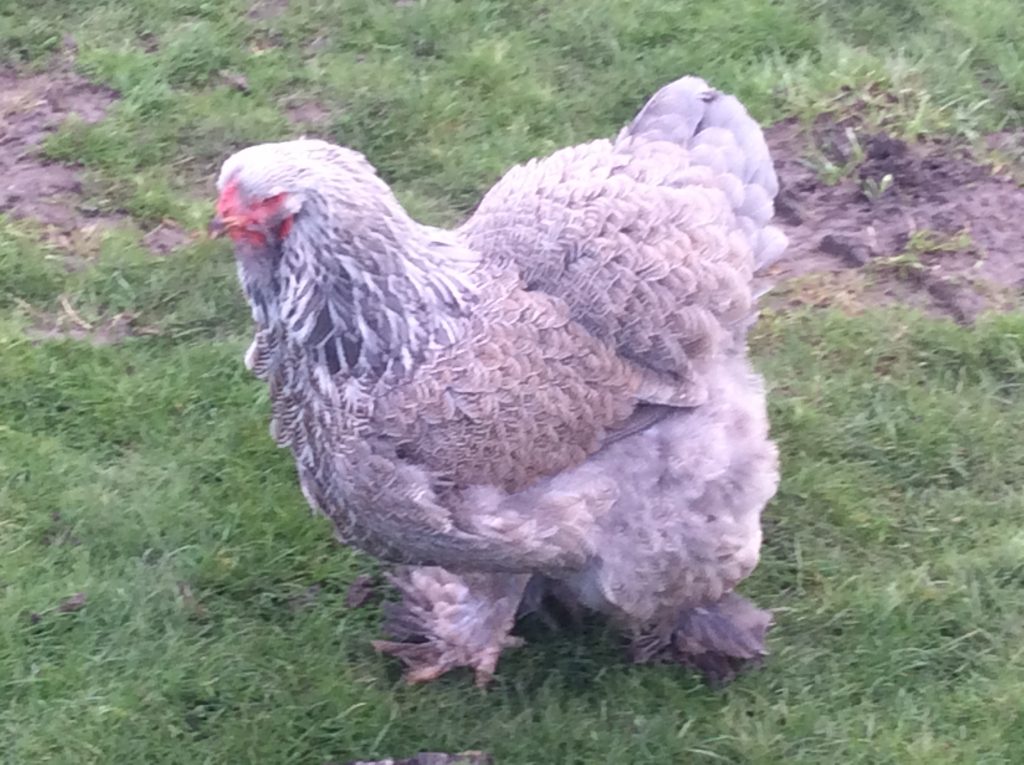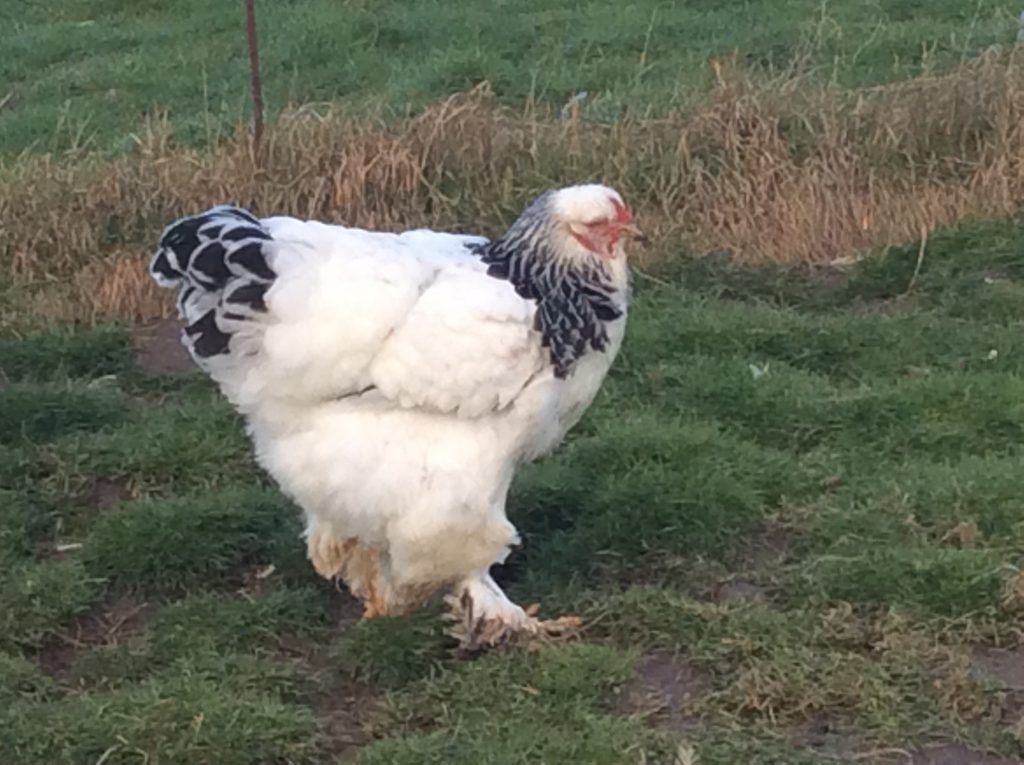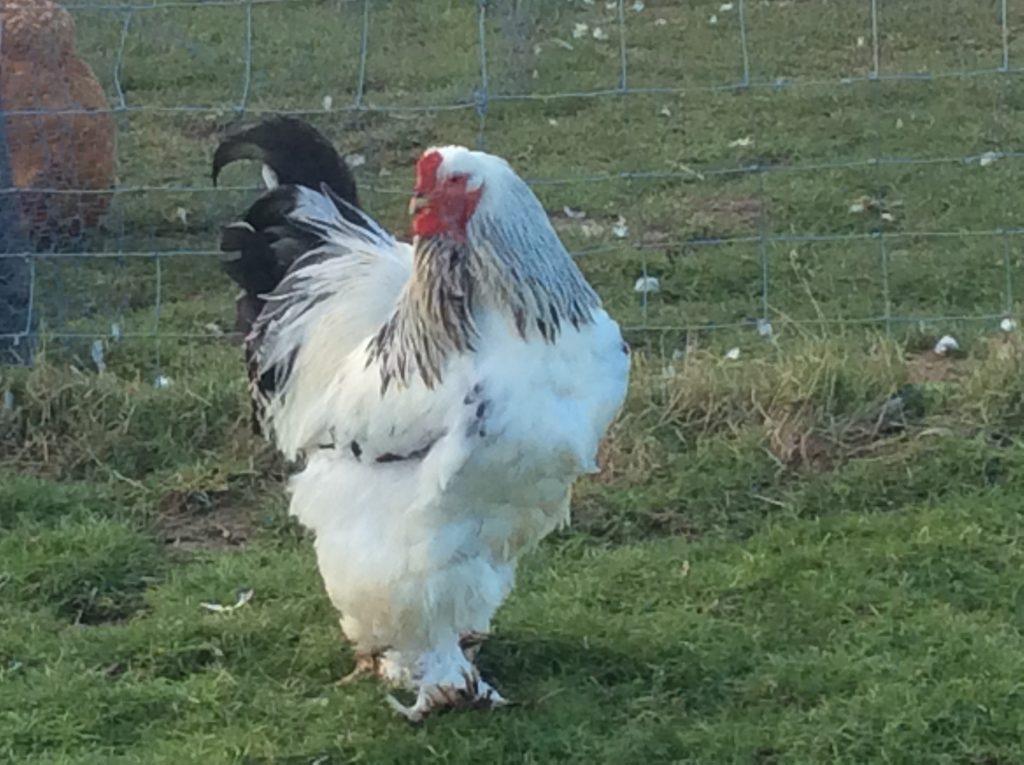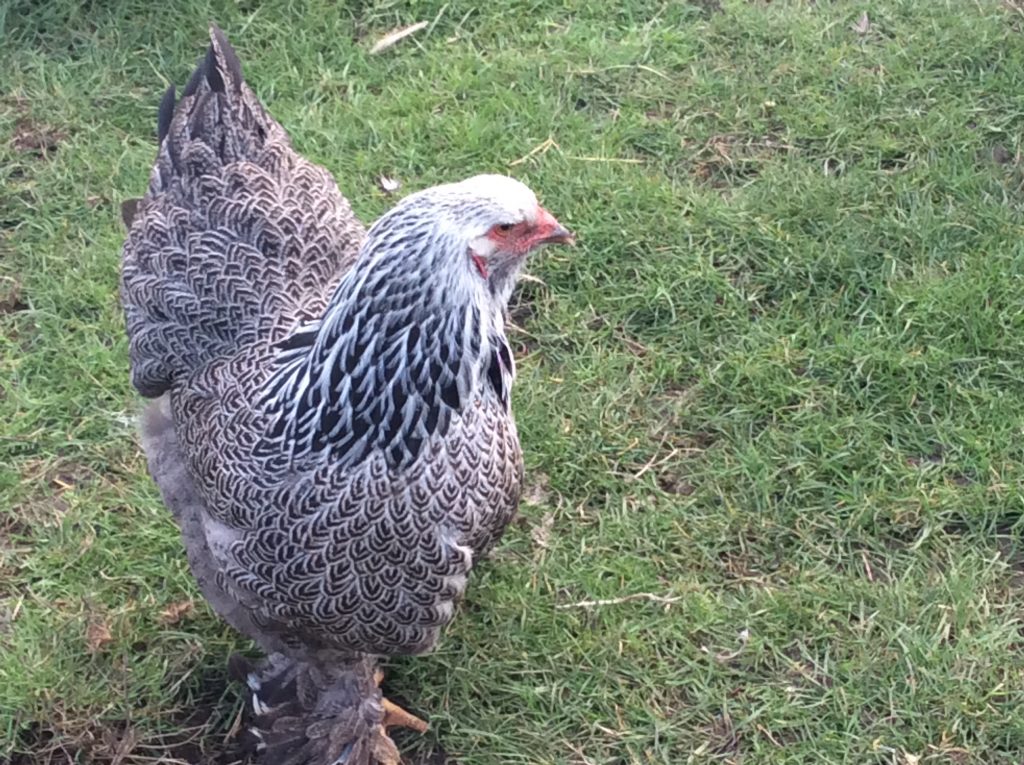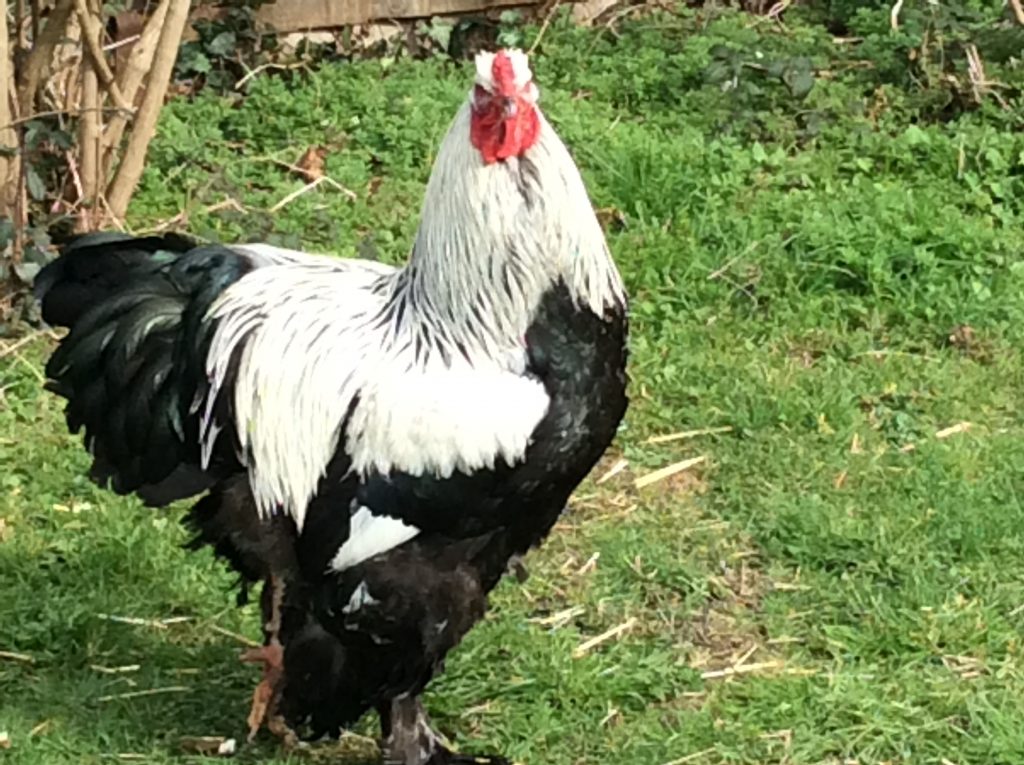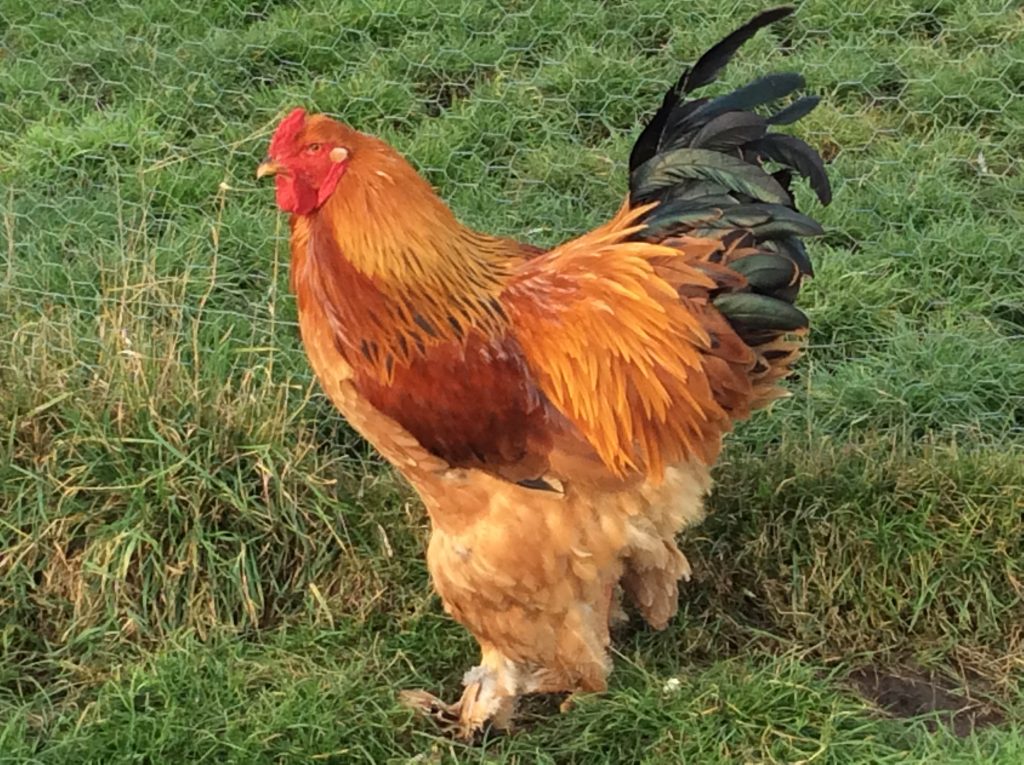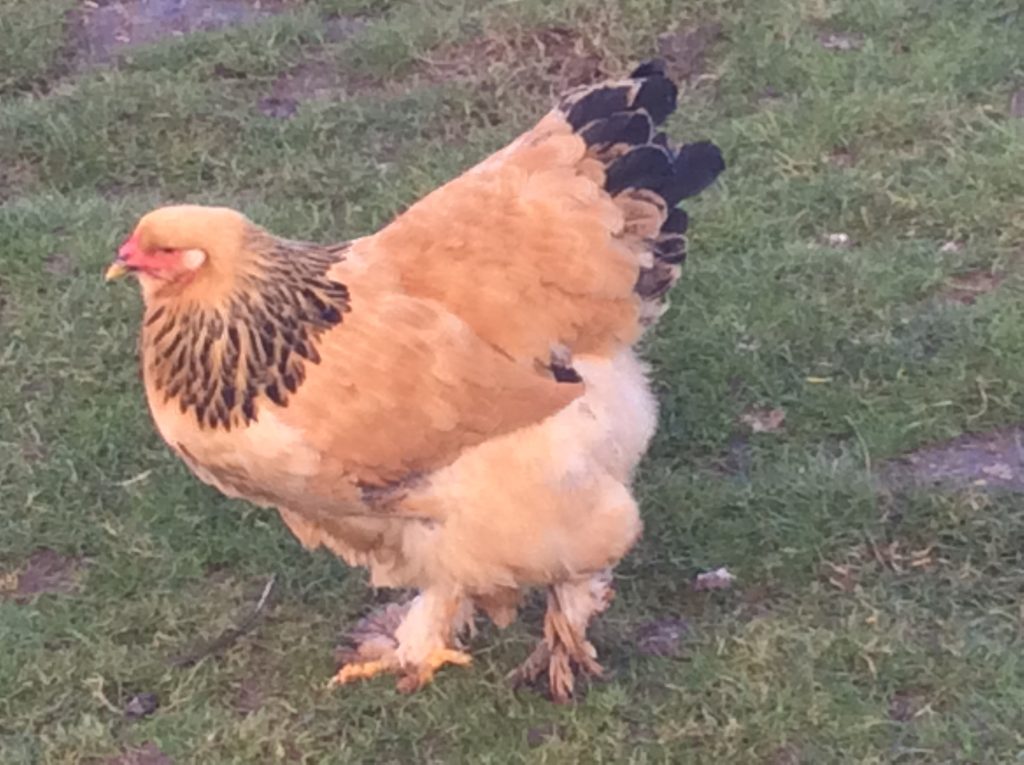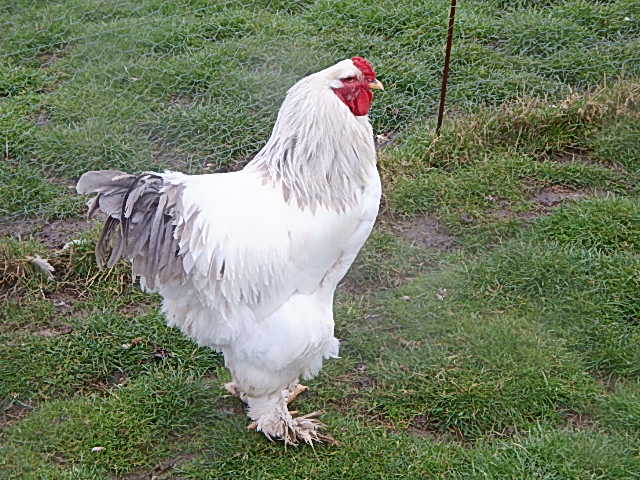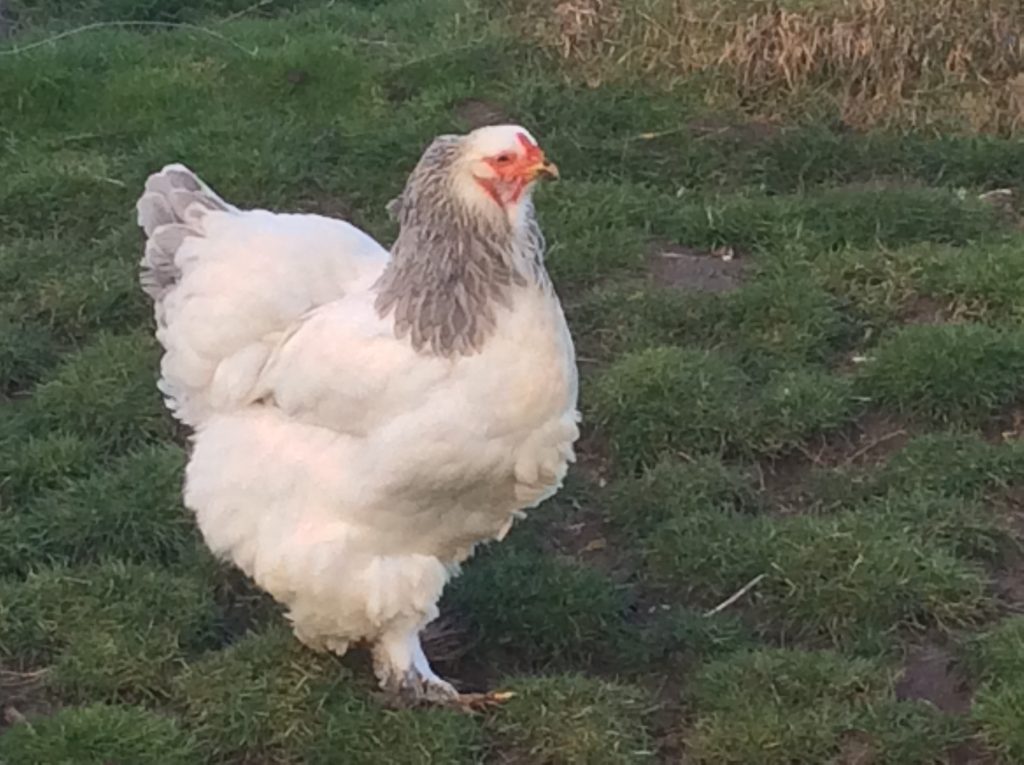There has been considerable controversy over the origin of the Brahma. It appears to have developed in the United States from very large birds imported from the Chinese port of Shanghai, which were thus known as “Shanghai” birds. It is likely that limited cross-breeding with Chittigong chickens from what is now called Bangladesh gave the Brahma the distinctive characteristics of head shape and the pea comb.
Brahmas were first exported to England in December 1852, when George Burnham sent nine “Gray Shanghaes” to Queen Victoria as a gift. The Dark Brahma variety was developed by English breeders from this stock, and later re-exported to the United States.
The Brahma was the principal meat breed in the US from the 1850s until about 1930.
The Brahma is a massive, stately bird. They are tolerant towards other breeds so can be kept together with other varieties without any problems and can even be submissive toward others, despite their size. Even the cockerels will tolerate each other, however we find that this is less likely if they have not been reared together in the same hatch batch. They are trusting birds and easy to tame. They also make a fantastic pet for the small flock owner and children because of their easygoing and calm dispositions. They are not very destructive in the garden.
The Light and Dark Brahma were included in the first edition of the American Poultry Association’s Standard of Perfection in 1874, the Buff variant was added in 1924 or 1929.
It takes the Large Fowl Brahma about two years to reach full maturity and size.


